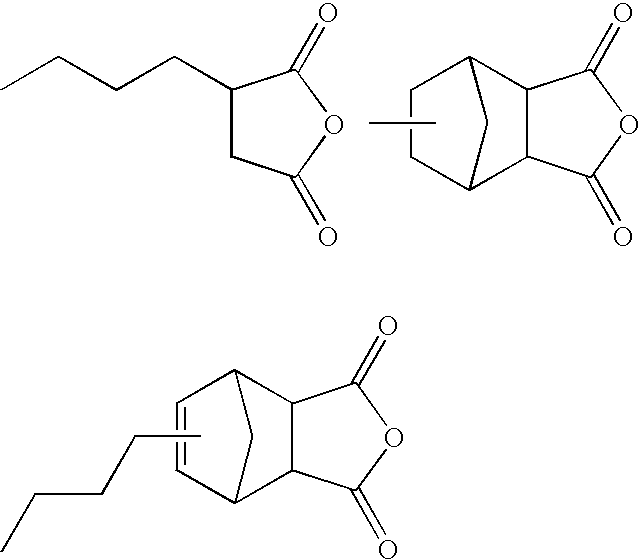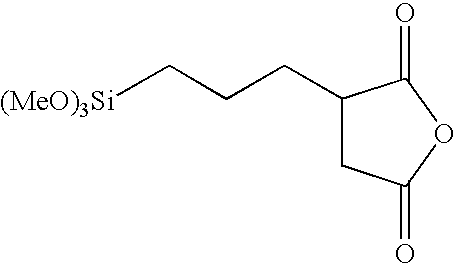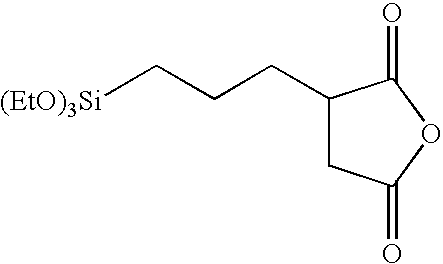Method of sealing semiconductor element mounted on gold-plated printed circuit board
- Summary
- Abstract
- Description
- Claims
- Application Information
AI Technical Summary
Benefits of technology
Problems solved by technology
Method used
Image
Examples
example 1
[0090] A gold-plated printed circuit board with a semiconductor element mounted thereon was immersed for 5 seconds in a solution comprising 0.5 parts by mass of an acid anhydride group-containing alkoxysilane represented by a structural formula (7) shown below:
and 99.5 parts by mass of ethanol, and the circuit board was then dried in an oven at 100° C. for 10 minutes. This circuit board was then subjected to potting with a composition A comprising 60 parts by mass of a compound represented by a structural formula (8) shown below:
(wherein, u=0.5), 40 parts by mass of a compound represented by a structural formula (9) shown below:
(wherein, v=5), a sufficient quantity of an isopropanol solution of chloroplatinic acid to provide a mass-referenced quantity of platinum metal atoms of 40 ppm relative to the combined mass of the compounds represented by the above structural formulas (8) and (9), and a sufficient quantity of bis(1-octyloxy-2,2,6,6-tetramethyl-4-piperidyl)sebacate to...
example 2
[0091] A composition B was prepared by adding 2 parts by mass of the acid anhydride group-containing alkoxysilane represented by the above structural formula (7) to 100 parts by mass of the composition A disclosed in the example 1. This composition B was used for conducting potting of an untreated gold-plated printed circuit board, thereby forming a coating film with a thickness of approximately 0.1 mm, and this film was then cured by heating at 100° C. for 1 hour, and then at 150° C. for 5 hours. This completed the preparation of a sealed structure.
PUM
| Property | Measurement | Unit |
|---|---|---|
| Time | aaaaa | aaaaa |
Abstract
Description
Claims
Application Information
 Login to View More
Login to View More - R&D
- Intellectual Property
- Life Sciences
- Materials
- Tech Scout
- Unparalleled Data Quality
- Higher Quality Content
- 60% Fewer Hallucinations
Browse by: Latest US Patents, China's latest patents, Technical Efficacy Thesaurus, Application Domain, Technology Topic, Popular Technical Reports.
© 2025 PatSnap. All rights reserved.Legal|Privacy policy|Modern Slavery Act Transparency Statement|Sitemap|About US| Contact US: help@patsnap.com



